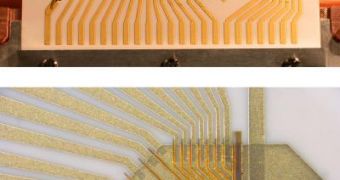Creating junctions inside future quantum processors is a very important step in their design. Actually, some may argue that this is the most important step, as, without a pathway to carry information from one place to the other inside a processor, all other innovations in the area are useless. However, the main problem with junctions is that they heat ions – single atoms, stripped of their electrons – to the point where they lose their precious quantum properties and become useless. Researchers at the National Institute of Standards and Technology (NIST) have now devised a new type of ion-trap junction that successfully manages to keep ions very cool during transit.
In addition to this remarkable feature, the innovation also allows ions to pass through at high enough speeds to set the basis for future quantum computer architectures. A single one can move through the junction in less than 20 microseconds, and in 50 to 100 microseconds from one area of a processor to the other. This speed makes processing large-scale information possible, NIST physicists announce. Thus, a major source of potential computational errors and processing slowdowns is almost neutralized, and its potential effects are brought to a minimum.
The trap itself, a small rectangular device of about 5x2 millimeters, is made from alumina (aluminum oxide) and is constructed by laser machines for a maximum precision and zero-error. Its 46 electrodes are created from its gold plating, and it contains 18 ion-trapping zones. A unique, X-shaped bridge makes the junction between the electrodes. The trapping zones are necessary in order to group ions in the pairs they need to be in for the quantum computer to efficiently process information. In all lab tests conducted thus far, which have used single beryllium ions, the success rate has been of over 99.99 percent.
In addition, the experts noticed that the temperature of the ions was about a million times lower than that recorded in other junction bridges. The electrically charged atoms (ions) move through these junctions at terribly high speeds and bump into each other, which generates a tremendous amount of heat. By ensuring that the heat was not created in the first place, the experts basically set the basis for the creation of a very effective information-transmitting system for future quantum computers.

 14 DAY TRIAL //
14 DAY TRIAL //